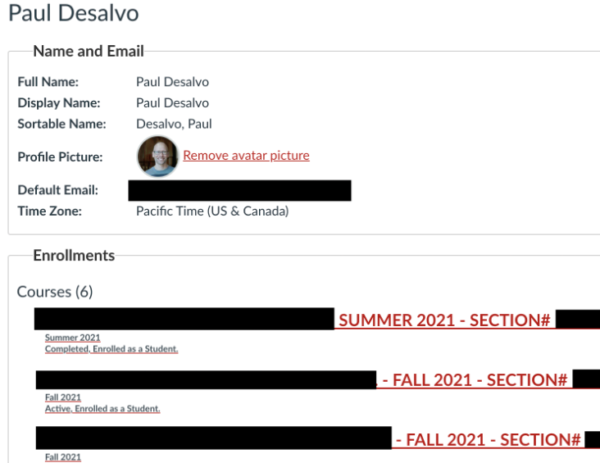In the wake of the transition to online training due to the COVID-19 pandemic, California community colleges have become overrun with “fake students, bots” and allegations of financial aid fraud.
Kim Rich is a professor of criminal justice and the department chair for Political Science, Administration of Justice, Economics, and Chicano Studies at Los Angeles Pierce College in Woodland Hills, California. Between 2008 and 2010, Rich worked as a professor on a part-time basis. She has been employed on a full-time basis since 2010. When the COVID-19 pandemic hit in March of 2020, Rich was tasked as a distance education specialist to help train faculty in the transition to online classes. That gave Rich greater access to student enrollment information than other faculty members.
“I have always been very good at catching cheaters,” Rich, who also has a law enforcement background, told The Epoch Times. “I have a knack for it. So, after the pandemic hit and I was tasked to do different types of training, I started to teach other faculty how to promote academic integrity, how to catch students who were cheating and how to prevent it.”

According to Rich, many colleges use Canvas, an online, web-based learning management system for institutions, educators, and students to access and manage online course learning material. In Canvas, students have the option to customize their avatar by uploading an image or simply leaving the default avatar. To remain active and participate in online college courses, students must complete a variety of tasks such as engaging in discussions with other students, completing uploaded assignments, and taking online quizzes and tests. However, Rich soon realized that all of the work being submitted by four students was clearly being completed by an individual who was not a student in the class.
“As I looked into it further,” Rich said, “I realized that about one-third of my class, which had about 30 students, were actually fake students.
“In my opinion, it appears there are at least two different scams at play,” Rich explained. “One is where ‘fake students’ are enrolling, then likely paying someone else to do the minimum amount of work to remain ‘active’ in the class in order to qualify for financial aid. The other scam appears to involve ‘bots,’ where the person behind the scam is simply trying to register as many ‘fake students’ or ‘bots’ into the system as possible so they can get in, get the financial aid and get out. Little work is being completed by these ‘bots.’”
Based on her discoveries, Rich began looking into what classes the “fake students” had taken prior to hers. She discovered many had taken the same classes with the same professor in the summer. Rich also realized that 11 of her new, suspected “fake students” were anthropology majors.
“That’s unheard of,” Rich said. “I don’t get 11 anthropology majors in any of my classes, which lead me to believe the bots had gotten in and just picked anthropology, which is I believe one of the first majors you can enroll in going from the top of the alphabet down. That just does not happen.”
Then Rich noticed the avatars had changed from the default to an actual image that appeared to be uploaded from the internet.
Here is the photo avatar for a suspected “fake student” claiming to be Paul Desalvo.

An internet search provides multiple images, including one on the Linkedin profile for Business Intelligence Manager Paul Desalvo at Kipsu in Minneapolis, Minnesota.










